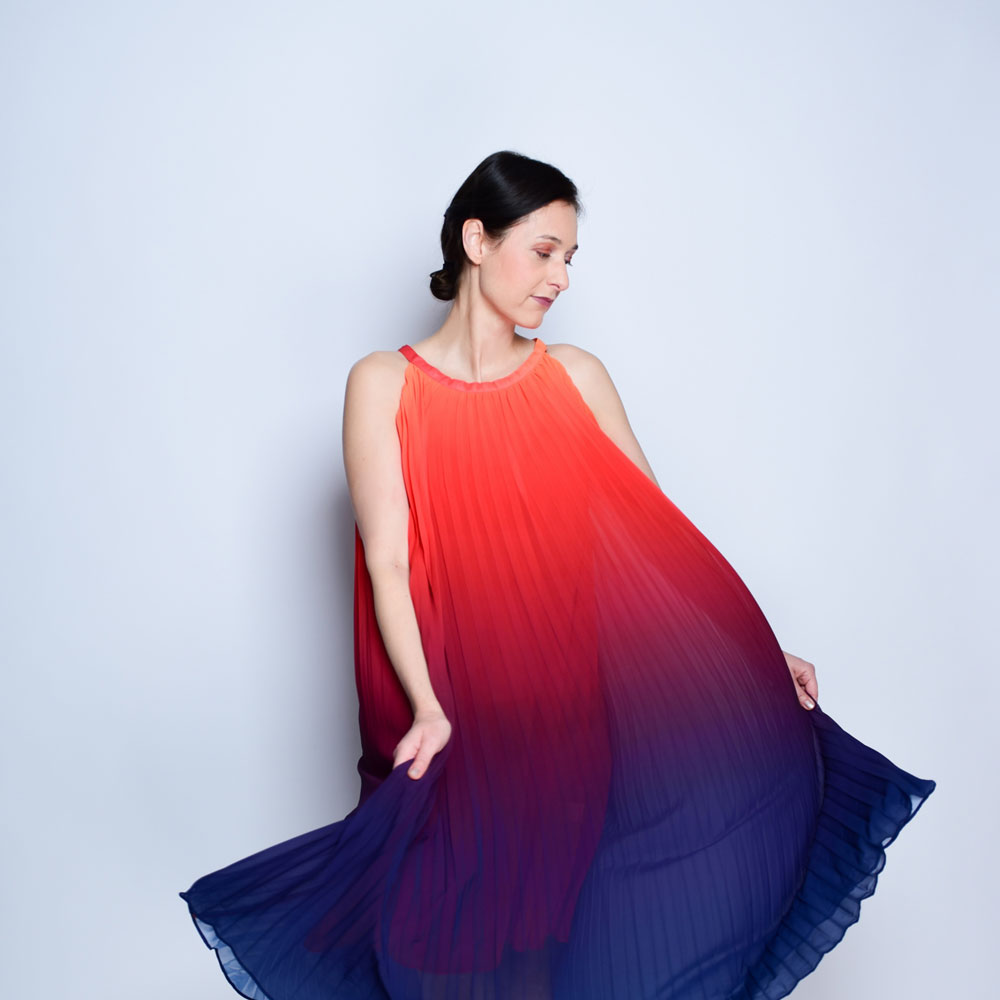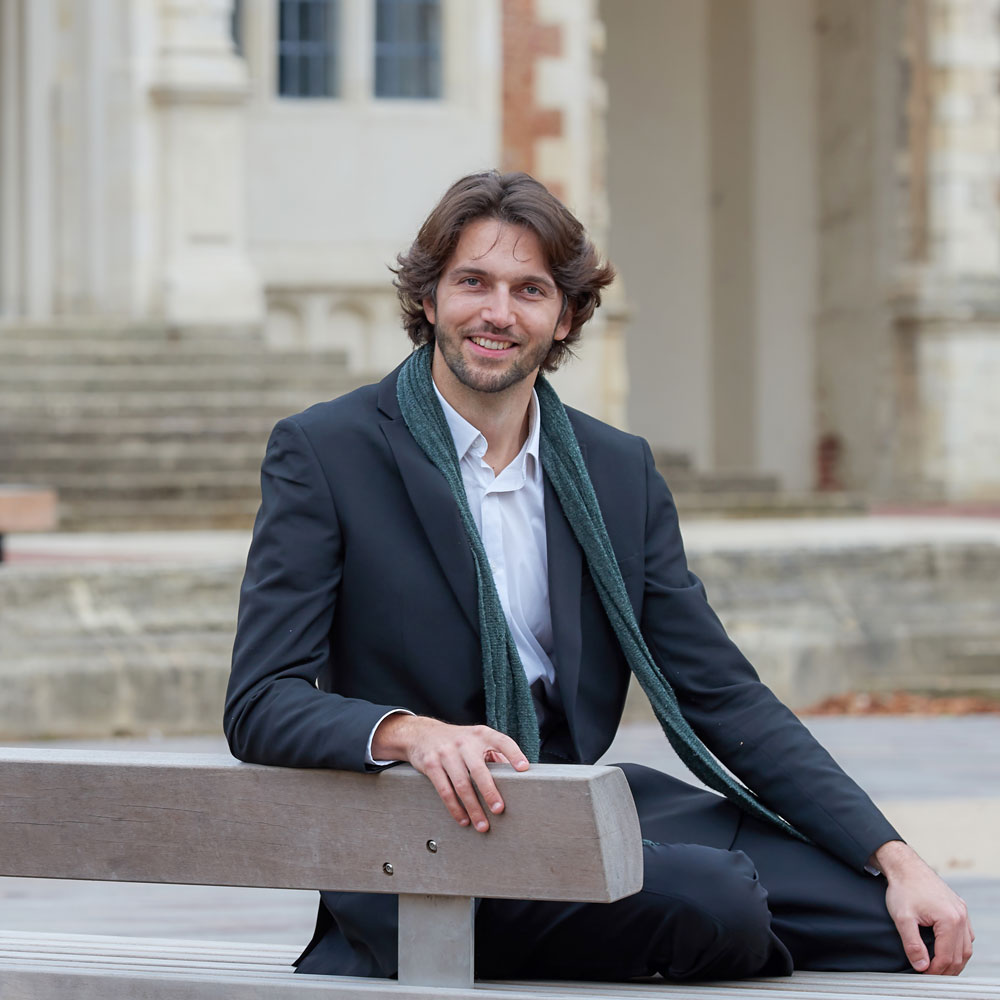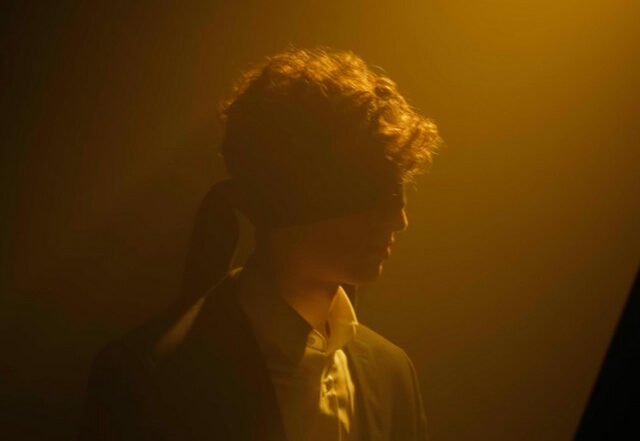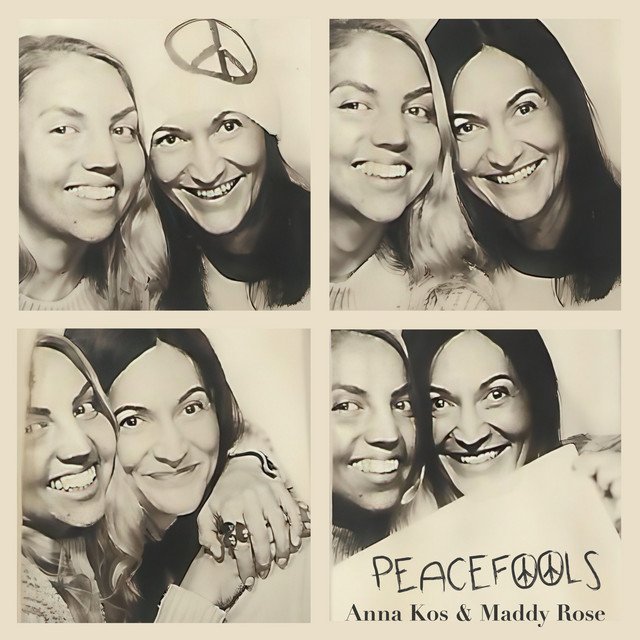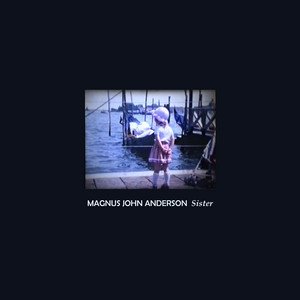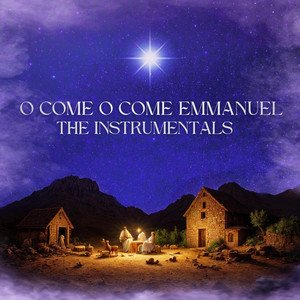Neoclassical Music ⁞ New Releases⁞ Artist Interviews⁞ Music News
Introduction of Neoclassical Music
Neoclassical music is a style of classical music that is characterized by its use of traditional forms and styles, as well as a focus on structure and balance. It is often seen as a reaction against the romantic style of music, which was characterized by emotion and passion, and was influenced by the ideas of the Enlightenment, which valued reason and classical learning.
Some of the key features of neoclassical music include the use of traditional forms such as sonata form, the use of clear and concise melodies, and the incorporation of elements of folk music and popular music. Neoclassical music also often featured a return to tonality, which is the use of a specific key or tonal center in a piece of music.
The neoclassical style has had a lasting influence on classical music, and it continues to be an important part of the classical repertoire
Favorite Neoclassical Music on Spotify
Favorite Neoclassical Videos on Youtube
Recent Neoclassical Interviews
Kaleidoscope of Colours Interview on Nagamag.com
Kaleidoscope of Colours
Interview
Nagamag:
What are the genres that describe better your music style?
Kaleidoscope of Colours:
classical crossover, percussive piano, contemporary piano, post minimal, ambient
Nagamag:
Few words about your musical background and career?
Kaleidoscope of Colours:
I`m a synesthete, which means, when I listen to music or play my piano I immediately perceive colours, that are evoked in my brain. A lot artists have it - Pharrell Williams, Lady Gaga. But because I had difficulties with traditional note reading, I startet my own way to compose - entirely on base of colors. I have always been able to memorize tones and sounds from a very early age, but it was many years later that I really understood that I associate music with colours and that the colors are the reason for my good orientation. Today synesthesia affects my work as a musician in any way. I’m able to approach music from a very new perspective by writing songs neither on a note level nor entirely based on improvisation, but on base of the colours that are triggered in my brain while listening to sounds. Each of my songs get the name of the scale and aura they have been perceived on. People ask me, how I see music, but I hardly find words for the colors and even shapes. But scientist can measure activity in a synesthetes brain, its not just an illusion ;)
Nagamag:
Do you remember your first connection of love to music that was the right impact to be a music artist now?
Kaleidoscope of Colours:
I grew up in Eastern Germany. When I was about 8 years old, I discovered my parents' guitar, and when I was 14, I got a keyboard as a present, with which I started playing my favorite songs from the radio by ear. I am entirely self-taught. I felt happy, when I could dive into my very own little world of imitating my musicals idols, trying to catch famous film melodies and secretly play them by ear on an old grand piano in my school. Until today, creating, writing music is something where I can pursue and live a lot of my personality traits, being curious and observing, to listen and speak out at the same time, to feel and connect. I always had difficulties with expressing myself when I was younger. Music helps me to calm down and express.
Nagamag:
Do you have any new music coming out?
Kaleidoscope of Colours:
My EP The Birth of Coulours just released on May, 8th 2020. Its a selection of piano based pieces that represent the second cycle of pieces and have been written and perceived on my personal colour scales.
Nagamag:
Most artists have a favorite song from a different music genre than the one they are producing music for... Which is yours?
Kaleidoscope of Colours:
Mogli "Alaska"
Nagamag:
Of Course Nagamag would love to listen also which track from a similar artist you admire?
Kaleidoscope of Colours:
Yann Tiersen "Tempelhof"
Thomas Hewitt Jones Interview on Nagamag.com
Thomas Hewitt Jones
Interview
Nagamag:
What are the genres that describe better your music style?
Thomas Hewitt Jones:
Cinematic, Contemporary Classical
Nagamag:
Few words about your musical background and career?
Thomas Hewitt Jones:
I was born into a musical family and played, performed and wrote music from a young age. I studied music classically and won the BBC Young Composer Competition in my teens, which led to many commissions and published works. I now work as a composer of commercial and concert music, and have had music played widely on TV, radio and in the cinema. I also write choral music and next month am due to start writing 3 new albums for EMI.
Nagamag:
Do you remember your first connection of love to music that was the right impact to be a music artist now?
Thomas Hewitt Jones:
I have always loved music's unique ability to express things which words cannot. Within its profoundly emotional universal language one can express aspects of the human experience and I find composing the most fulfilling thing. As a child I always loved attending concerts, and it was regular trips to the cinema which piqued my interest in music serving a narrative. I have been composing since I was about 5 years old!
Nagamag:
What's the coolest commission you've completed?
Thomas Hewitt Jones:
Last year I wrote my first three albums for Juice EMI which was pretty fun. My first job back in London (after assisting eminent film composer David Buckley in LA after university) was writing music for the London 2012 Olympic Mascots films, which played in UK cinemas leading up to the London Olympics. It was a wonderful opportunity, and I was forever grateful at the time to Barnaby Spurrier, Producer at Tomboy Films, for bringing me on to the project at the time.
Nagamag:
How are you enjoying Coronavirus lockdown?
Thomas Hewitt Jones:
Yes it is a strange time at the moment, isn't it. What a worrying time for the world. Although many music commissions have been postponed, my wife is expecting our first child very shortly, so hopefully that will add a new flavour to our lockdown! Musically, there are several new works that were recorded last year and were set for release throughout this spring and summer. I feel that music of all types is much needed at the moment, providing consolation and hope in times such as these.
Nagamag:
Most artists have a favorite song from a different music genre than the one they are producing music for... Which is yours?
Thomas Hewitt Jones:
Johann Sebastian Bach "Goldberg Variations"
Nagamag:
Of Course Nagamag would love to listen also which track from a similar artist you admire?
Thomas Hewitt Jones:
Carducci String Quartet Shostakovich "String Quartet no. 2 in A major op.68"
Neoclassical Features
Fares Nsouli – Blue Cradle (Marco’s Version) | Neoclassical music review
“Когда слышишь звуки фортепиано в исполнении -Fares Nsouli-, такие нежные, чувственные и, кажется, недосягаемые для большинства, словно пришедшие из другого мира, то поражаешься тому, насколько много эмоций они возрождают в подсознании. Понимаешь, что внутри тебя зарождается жизнь и все то, что раньше тревожило больше не имеет никакого значения. Все только начинается.”
-Nagamag.com
Expand to read review translations *
“When you hear the piano sounds performed by -Fares Nsouli-, so tender, sensual and, it seems, inaccessible to most, as if coming from another world, you are amazed at how many emotions they revive in the subconscious. You understand that life is born inside you and everything that used to worry you no longer matters. It’s only begining.”
-Nagamag.com
“Quand on entend les sons du piano interprétés par -Fares Nsouli-, si tendres, sensuels et, semble-t-il, inaccessibles au plus grand nombre, comme s’ils venaient d’un autre monde, on est étonné de voir combien d’émotions ils ravivent dans l’inconscient. Vous comprenez que la vie est née en vous et que tout ce qui vous inquiétait n’a plus d’importance. Cela ne fait que commencer.”
-Nagamag.com
The original review of “Fares Nsouli – Blue Cradle (Marco’s Version)” is written in the native language that is spoken by the dedicated, for this song, Nagamag’s Neoclassical reviewer and followed by two translations*, of which the one depends from the country of origin of the artist “Fares Nsouli” (Belgium) and the other one is translated to a different language than original review and the country of origin of the artist.
* Automatically Translated
Nagamag unveils the mesmerizing composition “Blue Cradle – Marco’s Version”, an extraordinary creation of harmony and creativity that “Fares Nsouli” offered to all of us. A Neoclassical song, which evoked an emotional voyage to our curator that desired to write down a unique review for “Fares Nsouli – Blue Cradle (Marco’s Version)”. What also sets this song among the featured choices of Nagamag is the way that “Blue Cradle – Marco’s Version” is enriched with Piano characteristics. “Fares Nsouli – Blue Cradle (Marco’s Version)” is a rich music creation that deserves to be listened to again and again. Nagamag is honored to share this detailed music review by one of our experienced reviewers for Neoclassical music compositions. As always, Nagamag keeps up evaluating Neoclassical songs from across the globe, ensuring that all Neoclassical enthusiasts around the world have access to these auditory treasures .
Neoclassical home page where “Fares Nsouli – Blue Cradle (Marco’s Version)” is hosted on Nagamag Music Magazine
Nagamag takes pride in supporting Neoclassical artists like “Fares Nsouli”, providing music reviews and music discoveries like “Blue Cradle – Marco’s Version”.
This music post about song “Blue Cradle – Marco’s Version” by “Fares Nsouli” is hosted in Neoclassical page on Nagamag.
There you can find similar Neoclassical artists to “Fares Nsouli” and more Neoclassical, Piano songs like “Blue Cradle – Marco’s Version” that have been carefully selected by Nagamag’s Neoclassical experienced curators and reviewed by Nagamag’s Neoclassical dedicated reviewers.
Learn everything about Neoclassical on Wikipedia
If you enjoyed “Fares Nsouli – Blue Cradle (Marco’s Version)” but you have never listened before to any other Neoclassical song or you are interested in learning more about Neoclassical music gerne then click here to visit Neoclassical music page on Wikipedia.
Neoclassical music refers to a distinct style with common characteristics. Each genre carries its unique sound, instruments, and cultural influences. For a deeper understanding of Neoclassical music, Wikipedia provides comprehensive insights into its history, notable artists, and iconic works. Delve into the diverse and dynamic world of Neoclassical music through this valuable resource, broadening your knowledge around Neoclassical genre.
Davide Anniballi – Alearda in D Major | Neoclassical music review
“Η ευτυχία μοιάζει να ξεπηδά μέσα από τις νότες αυτής της μελωδίας. Η μαγεία σκορπίζεται παντού και όλα τώρα φαίνονται πιο όμορφα. Οι άσχημες σκέψεις χάνονται και τη θέση τους παίρνει ένας φωτεινός καταγάλανος ουρανός μέσα στο μυαλό. Ο ρυθμός δεν σταματά να μας ρίχνει τη χρυσόσκονη της χαράς και νιώθουμε το πρωινό μας ξύπνημα να παίρνει το πιο αξιόλογο νόημα.”
-Nagamag.com
Expand to read review translations *
“Happiness seems to spring from the notes of this melody. Magic spreads everywhere and everything now looks more beautiful. Bad thoughts disappear and are replaced by a bright blue sky inside the mind. The rhythm does not stop throwing us the gold dust of joy and we feel our morning awakening takes on the most worthy meaning.”
-Nagamag.com
“La felicità sembra scaturire dalle note di questa melodia. La magia si diffonde ovunque e tutto ora sembra più bello. I cattivi pensieri scompaiono e vengono sostituiti da un cielo azzurro brillante nella mente. Il ritmo non smette di gettarci la polvere d’oro della gioia e sentiamo che il nostro risveglio mattutino assume il significato più degno.”
-Nagamag.com
The original review of “Davide Anniballi – Alearda in D Major” is written in the native language that is spoken by the dedicated, for this song, Nagamag’s Neoclassical reviewer and followed by two translations*, of which the one depends from the country of origin of the artist “Davide Anniballi
“ (Italy) and the other one is translated to a different language than original review and the country of origin of the artist.
* Automatically Translated
Nagamag unveils the mesmerizing composition “Alearda in D Major”, an extraordinary creation of harmony and creativity that “Davide Anniballi
“ offered to all of us. A Neoclassical song, which evoked an emotional voyage to our curator that desired to write down a unique review for “Davide Anniballi – Alearda in D Major”. What also sets this song among the featured choices of Nagamag is the way that “Alearda in D Major” is enriched with Cinematic characteristics. “Davide Anniballi – Alearda in D Major” is a rich music creation that deserves to be listened to again and again. Nagamag is honored to share this detailed music review by one of our experienced reviewers for Neoclassical music compositions. As always, Nagamag keeps up evaluating Neoclassical songs from across the globe, ensuring that all Neoclassical enthusiasts around the world have access to these auditory treasures .
Neoclassical home page where “Davide Anniballi – Alearda in D Major” is hosted on Nagamag Music Magazine
Nagamag takes pride in supporting Neoclassical artists like “Davide Anniballi
“, providing music reviews and music discoveries like “Alearda in D Major”.
This music post about song “Alearda in D Major” by “Davide Anniballi
“ is hosted in Neoclassical page on Nagamag.
There you can find similar Neoclassical artists to “Davide Anniballi
“ and more Neoclassical, Cinematic songs like “Alearda in D Major” that have been carefully selected by Nagamag’s Neoclassical experienced curators and reviewed by Nagamag’s Neoclassical dedicated reviewers.
Learn everything about Neoclassical on Wikipedia
If you enjoyed “Davide Anniballi – Alearda in D Major” but you have never listened before to any other Neoclassical song or you are interested in learning more about Neoclassical music gerne then click here to visit Neoclassical music page on Wikipedia.
Neoclassical music refers to a distinct style with common characteristics. Each genre carries its unique sound, instruments, and cultural influences. For a deeper understanding of Neoclassical music, Wikipedia provides comprehensive insights into its history, notable artists, and iconic works. Delve into the diverse and dynamic world of Neoclassical music through this valuable resource, broadening your knowledge around Neoclassical genre.
Latest Neoclassical discoveries
Fading Memories – Matthias Krauss
Serene and very beautiful ethereal melodies and gentle piano textures with this enchanting and soothing composition. Its harm... >>> Read full review & listen to the song on Nagamag #neo #modernclassical #solopiano #matthiaskrauss #germany #nagamag #musicmagazine #musicreview #review
Avenir – Leon Tomic
Mesmerizing and incredibly calming atmosphere of this piano beauty engage deeply within first notes. Harmonic structure and c... >>> Read full review & listen to the song on Nagamag #neo #modernclassical #leontomic #austria #nagamag #musicmagazine #musicreview #review
Peacefools – Maddy Rose
Song catches you right away. Nice instrumentation, especially with its lead piano theme, that feels so peaceful. Production a... >>> Read full review & listen to the song on Nagamag #commercial #jazz #altpop #maddyrose #austria #nagamag #musicmagazine #musicreview #review
Karen Salicath – ANGEL JOFIEL (THE ANGEL OF ILLUMINATION)
Ethereal melodies of a gentle piano themes in this enchanting and soothing composition are so blissful. Its harmonic piano st... >>> Read full review & listen to the song on Nagamag #piano #nagamag #musicmagazine #musicreview #review
Sister – Magnus John Anderson
Magnus John Anderson unfolds his creativity in a uniquely artistic single, made for sensitive ears. Discover a smooth combina... >>> Read full review & listen to the song on Nagamag #neo #modernclassical #ambient #magnusjohnanderson #sweden #nagamag #musicmagazine #musicreview #review
Ithaki – Yann Keerim
Serene world of ethereal melodies of this gentle piano themes is really enchanting. Its harmonic piano structure brings depth... >>> Read full review & listen to the song on Nagamag #piano #nagamag #musicmagazine #musicreview #review
O Come O Come Emmanuel (The Instrumentals) – Rachael Mann
Mesmerizing and melancholic mood that keeps gaining momentum as this piece progresses. With every instrument and the themes, ... >>> Read full review & listen to the song on Nagamag #cinematic #epicmusic #holidaymusic #rachaelmann #unitedstates #nagamag #musicmagazine #musicreview #review
Window – Alberto Fiori
Mesmerizing and incredibly calming atmosphere of this piano beauty engage deeply within first notes. Harmonic structure and c... >>> Read full review & listen to the song on Nagamag #neo #modernclassical #solopiano #albertofiori #italy #nagamag #musicmagazine #musicreview #review
Old Sleep Singer – Icarus Phoenix
Really loveable, song feels much deeper and strikes a chord instantly. Its positive vibe and beautiful atmosphere is just mes... >>> Read full review & listen to the song on Nagamag #indierock #indiepop #folkpop #icarusphoenix #unitedstates #nagamag #musicmagazine #musicreview #review
Difference between Classical and Neoclassical Music
Classical music refers to a broad range of music written in the classical tradition, which encompasses a wide range of styles and forms. It is generally characterized by its formal structure and its use of traditional instruments and ensemble configurations.
Neoclassicism is a style of music that refers to the revival and use of classical forms and styles in music, particularly in the 18th and early 19th centuries. It is characterized by its use of clear, concise forms and a focus on structure and balance. Neoclassicism was a reaction against the romantic style of music, which was characterized by emotion and passion, and was influenced by the ideas of the Enlightenment, which valued reason and classical learning.
Some of the key differences between classical and neoclassical music include:
Time period: Classical music refers to music written during the classical period (1730-1820), while neoclassicism refers to music written after the classical period that incorporates elements of classical forms and styles.
Emphasis on structure: Classical music is known for its formal structure and the use of traditional forms such as the sonata and the symphony. Neoclassical music also places a strong emphasis on structure, but may also incorporate elements of popular music and folk music.
Emphasis on emotion: Classical music is often more reserved and formal in its emotional expression, while neoclassicism tends to be more emotional and expressive.
Use of tonality: Both classical and neoclassical music use tonality, but neoclassicism often incorporates a wider range of tonal structures and may experiment with atonality.
Use of traditional instruments: Both classical and neoclassical music use traditional classical instruments such as strings, woodwinds, brass, and percussion. However, neoclassicism may also incorporate elements of popular music and folk music, and may use a wider range of instruments.
Overall, the main difference between classical and neoclassical music is the time period in which the music was written, and the specific techniques and styles used by the composer. Classical music is generally more formal and reserved in its expression, while neoclassicism tends to be more expressive and may incorporate elements of popular music and folk music.
The most used instruments in Neoclassical Music
In neoclassical music, the most common instruments used are those found in the classical orchestra, including:
Strings: Violin, viola, cello, double bass
Woodwinds: Flute, oboe, clarinet, bassoon
Brass: Trumpet, French horn, trombone, tuba
Percussion: Timpani, snare drum, bass drum, cymbals, xylophone, marimba, triangle
Keyboard: Piano, harpsichord
These instruments are often used to create a wide range of textures and sounds, and are featured in many different types of classical music, including neoclassical music. In addition to these instruments, many composers also incorporate elements of popular music and folk music into their compositions, and may use a variety of other instruments such as guitars, bass, drums, and synthesizers.
It’s also worth noting that many composers and performers of neoclassical music are skilled in a variety of different instruments, and may switch between different instruments in order to achieve the desired sound and texture.
Vocals are sometimes used in neoclassical music, although they are not as common as instrumental music. When vocals are used in neoclassical music, they are typically performed by trained classical singers who have the ability to sing with precise pitch and control.
One common use of vocals in neoclassical music is in operatic compositions, where singers perform arias and recitatives in a style that is similar to traditional opera. Neoclassical opera is a subgenre of classical music that combines elements of traditional opera with elements of neoclassicism, and often incorporates elements of popular music and folk music.
In addition to operatic vocals, vocals may also be used in other forms of neoclassical music, such as choral music or vocal chamber music. Some composers may also incorporate elements of popular music or folk music into their compositions, and may use vocals in a more modern or experimental style.
It’s worth noting that the use of vocals in neoclassical music is highly dependent on the individual composer and the specific piece of music, and not all neoclassical compositions will feature vocals.

